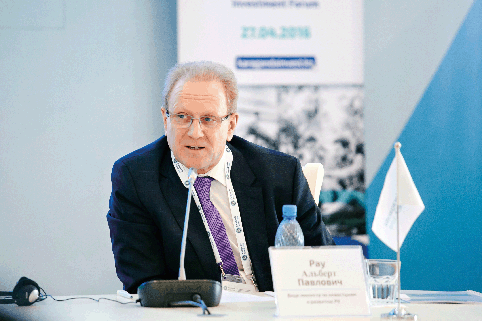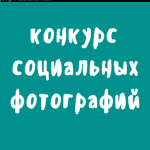Mining & Metals. Thinking for the future!
If the current level of development is maintained, some of the enterprises of mining-and-metals production complex risk losing competitiveness. Albert Rau, Vice Minister for investment and development of the the Republic of Kazakhstan, told us what kind of metal production the Kazakhstani companies should have to remain competitive in the long term.
 Albert Pavlovich, what is the current situation in the industry? What progress did the MMC have after the first year of the second SPIID five-year plan?
Albert Pavlovich, what is the current situation in the industry? What progress did the MMC have after the first year of the second SPIID five-year plan?
It is known that the world's metal industry is nowadays experiencing a deep crisis associated with the volatility of the value of the metals and the contraction of markets. A downturn on the prices of virtually all major quoted metals that reaches the crisis level of 2009 is observed. However, our core businesses maintain production and jobs at the level of the last year.
If we talk about specific figures, in 2015 the volume of extraction of metal ores amounted to 97.7% of the previous year, or 700.5 bn. tenge in monetary terms. However, the iron ore extraction rate fell to 78% and the same rate of non-ferrous metal ores, by contrast, rose to 104.6%.
The volume of production of metallurgical industry totaled 114.4%, or 2119.3 bn. tenge (including the production of the basic precious and non-ferrous metals - 123.6% and steel products - 100.9%). Growth in non-ferrous metallurgy is associated with an increase in the production of refined copper, silver, gold, aluminum oxide, titanium sponge, titanium alloys and ingots, as well as primary aluminium.
Indeed, last year became the first in realization of the State program of industrial-innovative development for 2015-2019, and it was marked by the launch of a whole range of significant projects for the industry.
The main project of the year was definitely the commissioning of the Bozshakol ore mining and processing complex by “Kaz Minerals Bozshakol” LLP (the enterprise produced about 7 million tons of copper ore). In addition, the production of copper cathode began at the second “Kaz Minerals” LLP facility - the Aktogay mining and processing complex, the full commissioning of which is planned for 2017.
Among other important achievements I can note the completion of the reconstruction and modernization of blast furnace no. 3 at JSC ArcelorMittal Temirtau, the introduction of the layered titanium cutting technology unit at JSC Ust-Kamenogorsk Titanium and Magnesium Complex, as well as the commissioning of the Aluminium of Kazakhstan LLP (Almaty region) aluminium profile factory and modern barite ore processing complex of Global Chemical Industries LLP (Karaganda region).
How did the deterioration of the external economic environment affect the activities of the mining and metallurgical enterprises?
As I said, the situation on the world markets affected the sales of the products of our exporting enterprises both in terms of money because of the falling prices, and quantities.
In general, the index of physical volume of production in the mining industry amounted to 98.4% in 2015. JSC Sokolov-Sarbay Mining Production Association reduced its indicators dramatically - the volume of marketable iron ore production fell by 26.4% compared to 2014. The reason for the decline is the downturn on consumption of pellets by Magnitogorsk iron works that was primarily due to the sharp fall of the rouble exchange rate. Furthermore, last year we supplied almost no iron ore to China, although in previous years the export volume amounted to several million tons of pellets. But the physical production of non-ferrous metal ores grew by 4.6%, mainly due to the new facilities in Bozshakol and Aktogay.
Despite all the difficulties, our metallurgists worked well (+14.4%). In the steel industry it is primarily JSC ArcelorMittal Temirtau, although they turned out only at 99.6% (index of physical volume) and in rolled products - 99.2%. Volumes of production were lost in recent months due to technological downtime.
Kazakhmys Corporation LLC has increased the production of refined copper (+4.8%), fine gold (+84%) and fine silver (+24%). In turn, JSC Aluminium of Kazakhstan and JSC Kazakhstan Aluminium Smelter (KAS) showed a growth in the production of aluminum oxide (+2%) and primary aluminum (+6%).
As you can see, in general, the enterprises of the mining-and-metals production complex managed to maintain production volumes during the last year.
In your opinion, which projects of the mining-and-metals production complex can serve as an example of how one needs to work with the investors?
In my opinion, the project of «Global Chemical Industries» LLP on barite ore processing in Karazhal is indicative in this regard. Just two years ago the company has approached us for the subsoil rights on barite deposits as a subject of industrial innovation. Thus, the project was included in the map of industrialisation of Karaganda region, and access to raw materials was needed to implement it as a measure of state support. This possibility has been provided: through direct negotiations, the enterprise was granted the right of subsoil use. At the same time the obligation for the construction of the plant is set down in the contract. And at the end of 2015, on the Day of Industrialisation, this project was commissioned, featuring the participation of the President by teleconference. Its’ particular importance is that the leading transnational company Halliburton took part in the implementation of the project. The best technologies in the world have been applied at the factory, and the company exports over a half of its products to Turkmenistan, Azerbaijan and even to Norway.
The Ministry for investment and development has plans to continue working with the leaders of the global mining-and-metals production complex. In particular, we look to the joint project of our Kazgeology JSC with an industry leader, Rio Tinto, on exploration of copper deposits in Kazakhstan.
What are your predictions for the next 10 years on the cost of basic metals and what risks and opportunities are available for our mining-and-metals production complex in this regard?
As is the case with oil, price forecasting for solid mineral resources is a thankless task. It is important to first understand how the global processes influence the demand for metals in general. In this regard, and on behalf of Prime Minister Karim Massimov, Kazakhstan's Industrial Development Institute conducted a summary of analyses on the trends in the industry by the world’s agencies. In general, metals will remain in demand in the long term as the basic material for the industry and economy. A number of global trends that occur now will contribute to this.
First of all we are talking about steel. It is known that Kazakhstan produces about four million tonnes of steel a year. At the same time the global production capacity - that is 2.3 billion tons - is used only at 60%, and the global surplus is about 700 million tons. Recently, our delegation participated in the OECD Forum on steel, which discussed measures to regulate the global market. It is understandable that to limit it at the global level is problematic, so the basic approaches worked on by this organization, are that steel production should become less energy-intensive and more environmentally friendly each year. In addition, there is much tension around the issue of preventing State support for unprofitable enterprises. For example, China cuts down 190 million tons of steel per year of production on the old, inefficient and environmentally troubled facilities.
Thus, in the future, demand for steel products will be different from what it is today. Firstly, there will be a demand for the qualitatively new steel grades with high durability, designed to be applied in the manufacture of various products - cars, ships, electrical devices. And secondly, the consumers, especially the markets of the developed countries, will focus on the ecological properties of the products.
Today Kazakhstan’s mining-and-metals production complex does not fully comply with these two trends. And therefore, if the current level of development is maintained, some of the enterprises of mining-and-metals production complex risk losing competitiveness. These are the modern challenges that will have to be answered at the outset by JSC ArcelorMittal Temirtau.
What tasks are set for the industry and the Ministry this year?
First of all it is maintaining the volume of production and jobs in major enterprises of mining-and-metals production complex as a part of the implementation of the Operational measures to ensure economic growth in 2016.
Another priority for the Ministry is also the implementation of the projects in ferrous and non-ferrous metallurgy, according to the Programme of industrial-innovative development for 2015-2019, the Complex plan for the development of mining and metallurgical industry of Kazakhstan for 2014-2018, as well as the Developement plan for mining of rare metals for 2015-2019.
Another task is Kazakhstan's accession to the OECD Steel Committee, which we have been participating in actively. By the way, representatives of the Committee will participate in the 7-th international mining and metallurgical Congress AMM 2016.
We are monitoring the progress of projects included in the Map of industrialization on a constant basis, working to implement the Road map for the development of mining and metallurgical complex in Kyzylorda region.
One of the priorities is the development of the Natural Resources Code, in which we are looking to improve the investment climate throughout the mining-and-metals production complex: from exploration to exploitation of mineral deposits.
Issues and concerns are numerous and complex, but interesting. And they can be solved only through close collaboration of public authorities and industrial companies, businesses, industry associations and the National Chamber of entrepreneurs. The Ministry has worked in this mode throughout the first five years, and we are continuing this now. And this is the key to our overall success, of which I have no doubt.
Albert Rau
Graduated from Rudnyi industrial Institute specialising in Electrification and Automation of Mining, and The Russian Presidential Academy of National Economy and Public Administration (RANEPA), majoring in State and Municipal Management. Doctor of Economics.
Since 1981 - Chairman of Rudnensk Industrial Institute trade union committee. Since 1982, the electrician of the "Kazshakhtrudstroy" trust. 1982-1984 - service in the armed forces. Since 1984-electrician, Chairman of Kurzhunkul mining administration trade union. Since 1991, Deputy Chief of the self-supporting commercial department of Lisakovsk Council of people's deputies Executive Committee. Since 1992, the Chairman of the urban developement in the Council of people’s deputies. Since 1993, the deputy, and since 1994 - the head of the Lisakovsk municipal administration. Since 1995, the Mayor of Lisakovsk, Chairman of the Administrative Council of Lisakovsk Special Economic Zone.
Since 2004, the Deputy Mayor of Kostanai region. Since 2007, the Chairman of the Board of JSC Social-Enterprenerial Corporation "Sary Arka" . Since 2008, the head of Akmolinsk region. Since March 2010, the first Vice Minister of industry and new technologies of Kazakhstan. Since August 2014, the Vice Minister for investment and development of the Republic of Kazakhstan.
Awards include the orders of Dostyk II degree, Barys of III degree and medals. Member of the Academy of Natural Sciences of the Republic of Kazakhstan. Honorary Worker of Education of the Republic of Kazakhstan.










